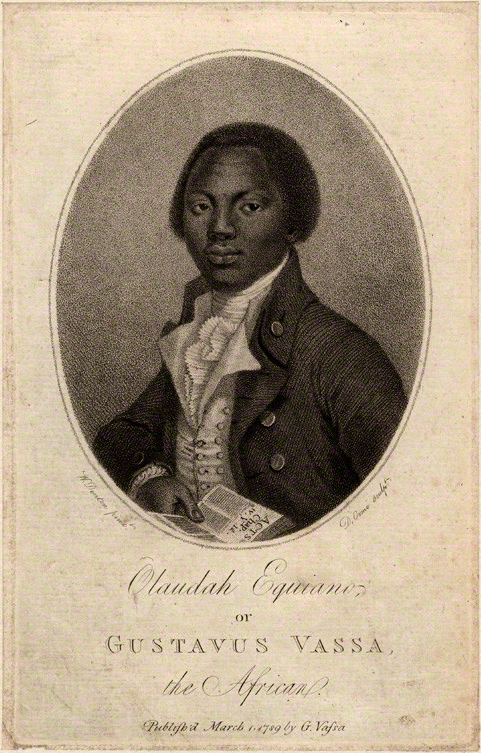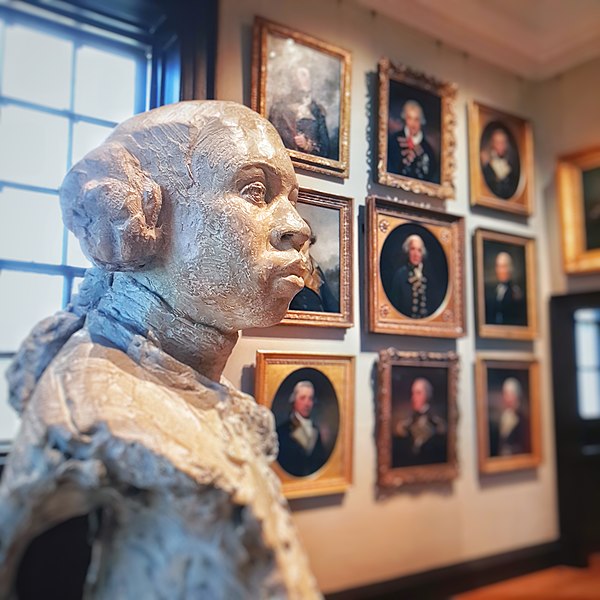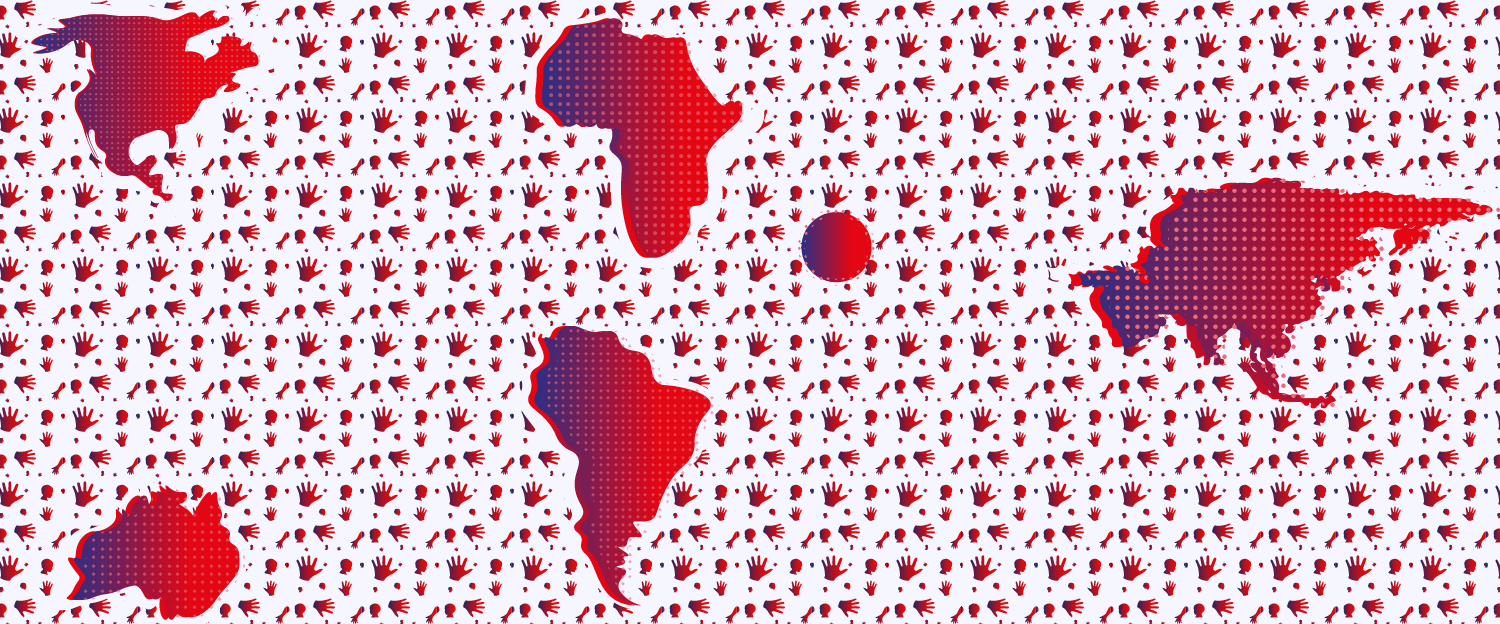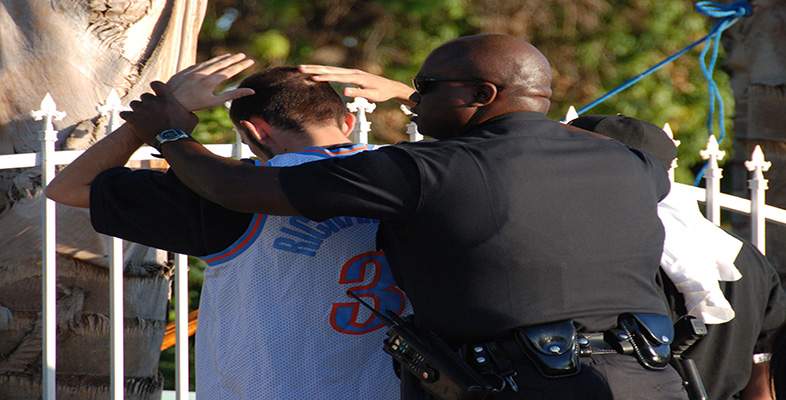In the first half of the eighteenth century, racial differences were defined by ideas of savagery, Christianity and civilisation (Wheeler, 1999). The concept of race was a marker of human difference based on perceptions, belief and actions driven by imperial power.
Equiano’s autobiography was and remains powerful because it describes the experience of slavery and gives vivid images of the middle passage from the perspective of the victims who are labelled as slaves. His autobiography was a significant contributor to changing perspectives on the slave trade in British society.
 Image of Olaudah Equiano
Image of Olaudah Equiano
He was a talented and competitive businessman, and he challenged the balance of political power through his campaigns and penmanship. His autobiography was sponsored by a significant number of influential subscribers, and he created a steady income through annuity bond agreements.
This was achieved by helping individuals to settle their unpaid mortgages, debts and bankruptcies. An example is Mrs Ann Leybourne of Westwell, Oxfordshire, who mortgaged her estate to Van Sittart for £7,000. Unable to pay the interest, she borrowed £600 from Equiano and purchased an annuity for £100 per annum payable to Equiano (Edwards, 1989). Equiano also leased Plaisterers Hall, London for investment purposes, which he rented to various commercial businesses (Lovejoy, 2010). Upon his death, Equiano’s estate was worth approximately £80,000, which was given to his surviving daughter Joanna Vassa (Lovejoy, 2020)
Equiano settled his family in the Cambridgeshire village of Soham after he married local English woman Susannah Cullen of Scottish descent from Ely in 1792 (Downs, 2020). In April 1792 the Stamford Mercury Newspapers wrote ‘On Monday Gustavus Vassa, the African, well known in most parts of this kingdom as a preacher, was married at Soham to Miss Cullen, daughter of the late Mr James Cullen of Ely’ (Coupe, 1972).
His marriage was also reported in the London’s Gentlemans Magazine Newspaper 19-21 edition and the General Evening Post. Both newspapers recounted that Equiano announced the fifth edition of his autobiography, and he advocated the promotion of inter-racial marriage (Lovejoy, 2006).
Equiano’s marriage and statement illustrates that interracial marriage and relationships operated and were accepted on different levels of English society.
Moreover, his actions and statement empowered the promotion of political and social ideals that were present in English society.
The couple had two daughters: Anna Maria (born 1792) and Joanna (born 1795). After a long period of ill-health Susannah Cullen died in 1796 (Lovejoy, 2006). Her death was followed by Equiano who died in London in March 1797 and their eldest daughter Anna Maria after she contracted measles age four years in July 1797 (Downs, 2020).
 Sculpture of Olaudah Equiano (Photo by ©JRennocks)
Sculpture of Olaudah Equiano (Photo by ©JRennocks)
The commemorative epitaph poem dedicated to Anna Maria is found on the wall outside St Andrew’s Church in Chesterton, Cambridge, which includes: ‘A child of colour haply not thine own. Her father born of Afric’s sun-burnt race. Torn from his native fields, ah foul disgrace’ (Ind and Mott, 1822, p. 49). The poem also suggests that Anna Maria is buried in the church yard: ‘but one a hapless orphan slumbers here’ (Ind and Mott, 1822, p. 49).
The poem was written by Edward Ind of Cambridge, a local poet, born in St Ives, Cambridgeshire. The poem titled Line, which describes the dedication to Anna Maria Vassa daughter of Gustavus Vassa was published in 1822. The collection of poems was edited by Thomas Mott Esq and published in Cambridge. The book of poems is titled The Posthumus Poetical Works of the Late Edward Ind of Cambridge Esq and a Biological Sketch of his Life (Ind and Mott, 1822).
His daughter Joanna Vassa’s early life remains a mystery, but it is known that she married Reverend Henry Bromley, a congregationalist minister from Islington, London. There is no evidence that the couple had children and she died while separated from her husband in 1857 aged 61 from a uterine disease (Osbourne and Lashley, 2007).
An obituary for Vassa’s son-in-law, the Reverend Henry Bromley, who died in February 1878, noted that ‘he had married Miss Joanna Vassa, a daughter of the then well-known, and still remembered, Gustavus Vassa, the African’ (Lovejoy, 2006, p. 340).
Equiano’s first visit to Cambridgeshire remains unknown, however, there is archival evidence from Magadelene College, Cambridge University that Equiano wrote an undated hand-written invitation to the Master of Magadelene College, Rev. Peter Peckard, requesting to meet him. On 30 July 1789, Equiano published a letter in the Cambridge Chronicle Newspaper, where he expressed his gratitude for the kindness to the gentlemen of the university and the people of the town.
Significantly he mentioned the racial tolerance experienced in his visit:
'Here I experience true civility
without respect to colour or complexion. Nor have even the amiable fair-sex
referred to countenance the sooty African’
(Vassa, 1789)
The article expressed heart-felt gratitude for the hospitality he received and for the acknowledgement of the oppression and treatment of the African slaves (Vassa, 1789).
Later evidence of the friendship and collaboration is seen in correspondence of support from the elite clergy and sponsors to act as patrons for the sales of Equiano’s eighth edition of his autobiography printed in 1794. The initial pages of this autobiography reveal the letter from the Master of Magadelene College, Cambridge University, Rev. Peter Peckard, to gentlemen on the Chairman of the Committees for the Abolition of the Slave Trade in 1790 (Vassa, 2004).
This introduction of Equiano and his autobiography focuses on his character and the patronage across Britain for his literature. The letters describe Equiano as African, enlightened, intelligent, upright, distinguished and of excellent character (Vassa, 2004). These descriptions of his character allow for consideration on the fluidity of Equiano’s identity as an Igbo, preacher, abolitionist, author, African slave, African/English gentleman, Son of Africa and Ethiopian.
Equiano’s autobiography was a powerful testimony that shaped awareness of the middle passage and the life of the enslaved in the English colonies. For contemporary audiences his narrative serves as a first-hand account of racialised society in eighteenth-century England and the ‘New World’. This gives depth to the historical inequalities that resonate to the power dynamics and legacies of contemporary inequalities experienced in Western society.
Equiano’s narrative also shines a lens on the power of African slaves whose knowledge, experience, intellect, and skills, which were significant to the successful economic wealth of Britain and her colonies.
Equiano worked in collaboration with leading abolitionists Rev. Peter Peckard, Thomas Clarkson, William Wilberforce and Granville Sharp and other influential individuals to promote dialogue on the abolition of slavery. It was known that Equiano was an informant to Granville Sharp and that he drew his attention to the murder of 130 slaves thrown overboard on the slave ship the Zong that was not far from the shores of Jamaica in 1783 (Davis and Gates, 1991, p. 183).
It is also believed that Prime Minister Pitt followed Equiano’s work and that he was also well known to Queen Charlotte to whom he dedicated his autobiography (Equiano and Sapoznik, 2013, pg. xiii). Equiano’s description of the middle passage, enslavement, and his life experience in England as a slave and as a self-made free man gives depth to race relations in eighteenth-century British society.
His autobiography remains powerful to contemporary audiences in shaping awareness through a first-hand account of enslavement and offers insights into the exploitation of twenty-first-century Africa.
In fact, Equiano’s ability to promote the change of
opinion on slavery in Britain and the passing of the British Slave Trade Act of
1807 left a long-lasting legacy and celebrity to his children long after his
death.
Olaudah Equiano: life in Cambridge and the abolition movement
Carol is an Associate lecturer and Honorary Associate in the Department of Geography (FASS) and Global Studies. As a social anthropologist she is passionate about research, and has been conducting a research project on Olaudah Equiano’s life in Cambridge and his contribution to the abolition of the transatlantic slave trade. This project revealed fascinating insights into the social and working relationships between eighteenth-century free Black men in England, English scholars, and clergymen. The significance of this is their active involvement or connection with the transatlantic slave trade and enslavers.
Carol’s goal is to inspire the academic and public community to increase their knowledge and explore past events in history.




Rate and Review
Rate this article
Review this article
Log into OpenLearn to leave reviews and join in the conversation.
Article reviews